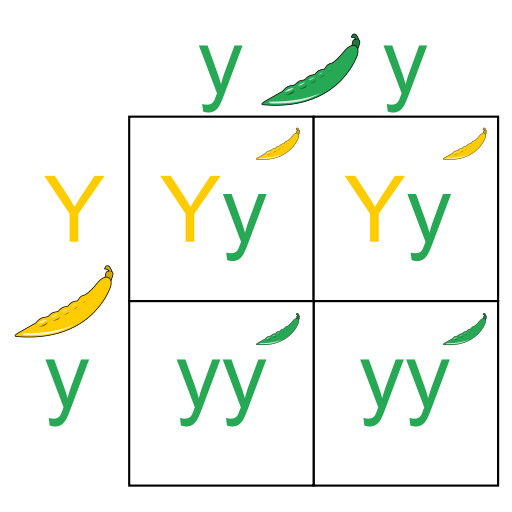Caroline Koffke
Haseung Jun
Caroline Koffke
Haseung Jun
Skills you’ll gain in this topic:
- Explain how chromosomes carry genes that influence inheritance.
- Describe how chromosomal mutations, like deletions and duplications, affect organisms.
- Relate chromosomal inheritance patterns to specific genetic disorders.
- Predict phenotypic outcomes based on chromosomal changes.
- Analyze the role of nondisjunction in conditions like Down syndrome.
Understanding Chromosomal Basis of Inheritance
As described before, chromosomes are inherited from both parents following the rules of genetics. There is an equal chance that either version of a gene may be inherited in offspring due to the law of Independent Assortment. Random fertilization allows for even more variation in that it is simply by chance that a certain egg and a certain sperm combine to form a zygote.
Crossing over in the first stages of meiosis leads to a number of different chromosomal combinations that increase the amount of variety in a population.
All of these components lead to the immense amount of diversity that we see on our planet. There will never be another you, because there is no chance that the genetic combination that created you will be created again. Remember, the only reason we don't do mitosis when reproducing is because variation in the population keeps the population more stronger when combatting diseases. It is an advantage to survival, so that's why we need to go through the pain of dividng twice with the process of meiosis.
Punnett Squares
Punnett squares allow us to determine the specific probability that two parents will create offspring with certain phenotypes. These are frequently used to determine probabilities, but only work for traits that have a simple inheritance pattern.
The ability of a parent to pass on genes to their offspring is fundamental to life. It creates the process of natural selection, as some individuals are able to survive and pass on their genes more frequently than others.

Image courtesy of WikiMedia Commons.
Our DNA is coiled into chromosomal shapes because it allows more easier distribution. It also helps us with understanding the patterns of inheritance. Because we rely on chromosomes for inheritance, genetic disorders can come from mutated alleles or nondisjunction as discussed earlier.
Check out the AP Bio Unit 5 Replays or watch the 2021 Unit 5 Cram
<< Hide Menu
Caroline Koffke
Haseung Jun
Caroline Koffke
Haseung Jun
Skills you’ll gain in this topic:
- Explain how chromosomes carry genes that influence inheritance.
- Describe how chromosomal mutations, like deletions and duplications, affect organisms.
- Relate chromosomal inheritance patterns to specific genetic disorders.
- Predict phenotypic outcomes based on chromosomal changes.
- Analyze the role of nondisjunction in conditions like Down syndrome.
Understanding Chromosomal Basis of Inheritance
As described before, chromosomes are inherited from both parents following the rules of genetics. There is an equal chance that either version of a gene may be inherited in offspring due to the law of Independent Assortment. Random fertilization allows for even more variation in that it is simply by chance that a certain egg and a certain sperm combine to form a zygote.
Crossing over in the first stages of meiosis leads to a number of different chromosomal combinations that increase the amount of variety in a population.
All of these components lead to the immense amount of diversity that we see on our planet. There will never be another you, because there is no chance that the genetic combination that created you will be created again. Remember, the only reason we don't do mitosis when reproducing is because variation in the population keeps the population more stronger when combatting diseases. It is an advantage to survival, so that's why we need to go through the pain of dividng twice with the process of meiosis.
Punnett Squares
Punnett squares allow us to determine the specific probability that two parents will create offspring with certain phenotypes. These are frequently used to determine probabilities, but only work for traits that have a simple inheritance pattern.
The ability of a parent to pass on genes to their offspring is fundamental to life. It creates the process of natural selection, as some individuals are able to survive and pass on their genes more frequently than others.

Image courtesy of WikiMedia Commons.
Our DNA is coiled into chromosomal shapes because it allows more easier distribution. It also helps us with understanding the patterns of inheritance. Because we rely on chromosomes for inheritance, genetic disorders can come from mutated alleles or nondisjunction as discussed earlier.
Check out the AP Bio Unit 5 Replays or watch the 2021 Unit 5 Cram

© 2024 Fiveable Inc. All rights reserved.